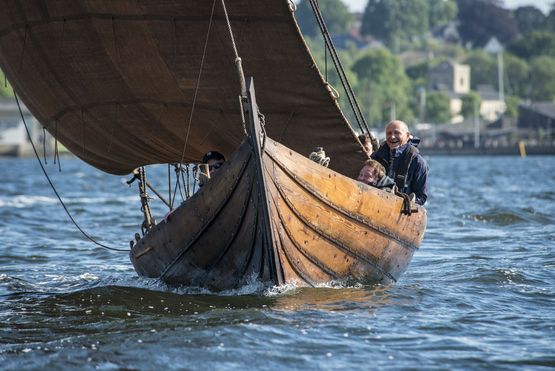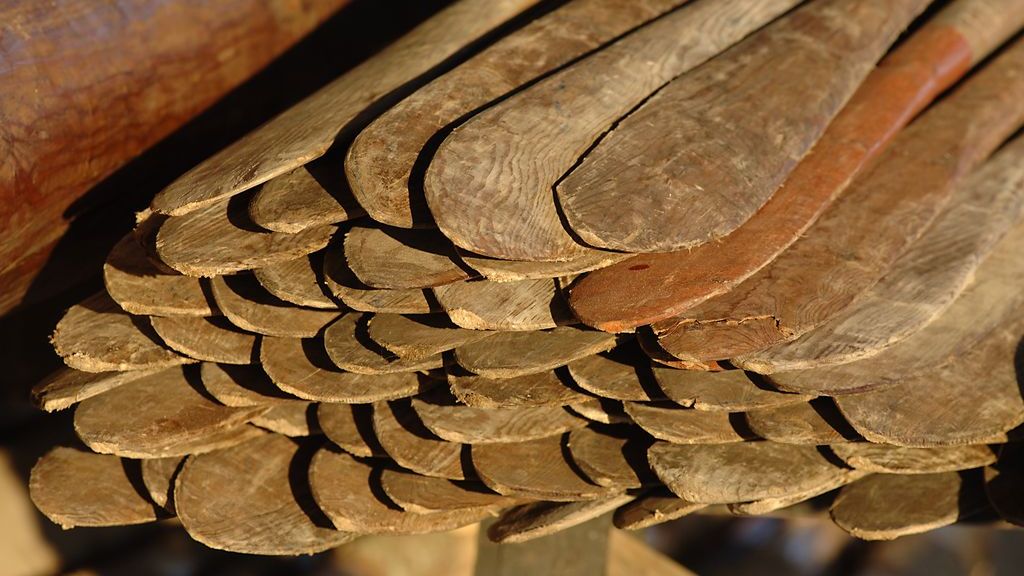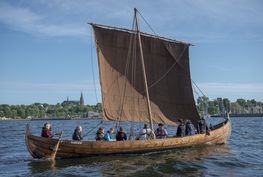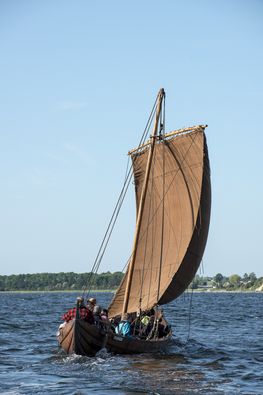During July and August, eight experienced sailors connected with the Viking Ship Museum will undertake a journey in the wake of the Norsemen along the southern and western coast of Greenland. The trial voyage will explore important issues such as how the Norsemen maintained communication between their scattered settlements. During the trip, the crew will also collect sailing data, which will later be used in collaboration with researchers to fill in the gaps in our understanding of how difficult – or easy – it was to sail along the coast of Greenland in a Viking ship, propelled only by oars and sail.
Along Greenland’s coast in a Viking ship
The vessel in question is Skjoldungen, the Viking Ship Museum’s recon-struction of the archaeological ship-find, Skuldelev 6 - an 11m long transport and fishing boat, originally built in western Norway in ca. 1030. It is a boat-type that was most likely used by the Norsemen for local sailing, as well as for fishing and hunting in Greenland.
The Greenland voyage is the result of collaboration between researchers from the Viking Ship Museum and the National Museum of Greenland. The researchers expect to gather – not just extremely valuable, but also highly difficult to obtain – information about everyday life for the Norsemen. The crew will investigate and document sailing times and distances, under both oar and sail and in relation to wind, tide, ice and other factors.
“We’re talking about experimental archaeology, where we get the chance to explore the Norsemen’s travelling conditions in practice. The settlements all lie near the coast and the sea-routes most likely offered the best potential for maintaining contact between the Norse settlements, but how mobile were they in reality? If we can gain a firmer understanding of this issue, we also stand to gain a greater insight into both the political and economic aspects of society at that time” tells Morten Ravn, Research Co-ordinator at the Viking Ship Museum.
When volunteering brings rewards
Skjoldungen’s crew have used three years to plan and train for this voyage and now, two months before Roskilde Fjord’s gentle, tree-decked coastline is to be swapped for icebergs, glaciers and cliffs, the sense of expectation and adventure fills every waking moment, relates skipper Ole Sand:
- We cannot wait to get started. Just being able to sail in the beautiful land-scape of Greenland is a wonderful thing on its own, but there’s also the extra dimension in that this is the first time in 1,000 years, that anyone has attempted a voyage along the coasts and skerries of this area, in a reconstruction of the small fishing vessels that were typical in the Viking Age. It’s going to be incredibly exciting to see how we manage to reach the Norse settlement sites along the sea-route”.
Skjoldungen will be shipped by the Royal Arctic Line to Nanortalik in Greenland, from where the voyage will start on July 2nd. The voyage is expected to take six weeks and will end in Nuuk in western Greenland.
The trial voyage can be followed on the Viking Ship Museum’s website, where you can already read more information about the ship, the purpose of the voyage and the crew.
» <link internal-link internal link in current>Read more about the trial voyage here...
Info:
-Eight members of Skjoldungen’s Boat Guild will sail 560 nautical miles along the southwestern coast of Greenland, in a reconstruction of a Viking ship. Along the way, they will explore sailing routes, distances and travel times between the areas settled by the Norse.
-The voyage will take place from July 2nd to the middle of August.
-The journey will contribute new knowledge concerning the sailing routes between the Norse settlements in southwestern Greenland.
- The voyage will be carried out in Skjoldungen, a reconstruction of the archaeological ship-find, Skuldelev 6 – an 11m long fishing boat, originally built in the Sognefjord area of western Norway.
The project is supported by:
Aase og Jørgen Münters Fond
Tryg-Fonden, Oticon Fonden
15. Juni Fonden
Ernest B. Sund Fonden
Kong Christian den Tiendes Fond
Royal Arctic Line.





